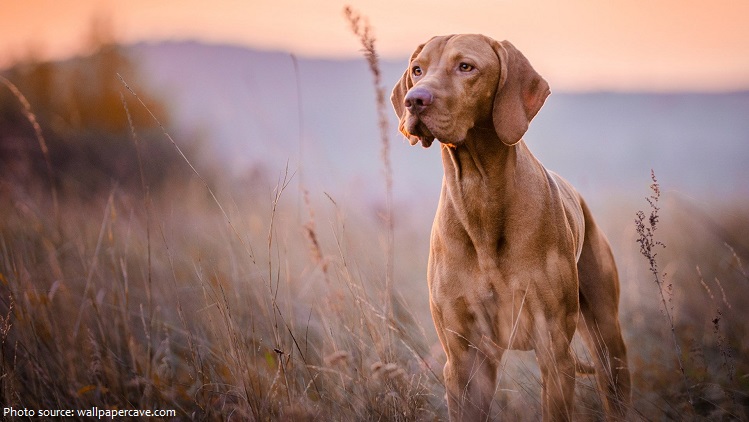
The Vizsla is a breed of sporting dog whose ancestors were probably brought to Hungary by the Magyars more than 1,000 years ago.
Developed on the open plains of Hungary, it was bred to be a swift and cautious hunter, wary of alerting its quarry.
Its name means “searcher” or “tracker” in Hungarian.
The Vizsla is a natural hunter endowed with an excellent nose and outstanding trainability. It was bred to work in fields, forests or bodies of water. Although they are lively, gentle-mannered, demonstrably affectionate and sensitive, they are also fearless and possess a well-developed protective instinct.
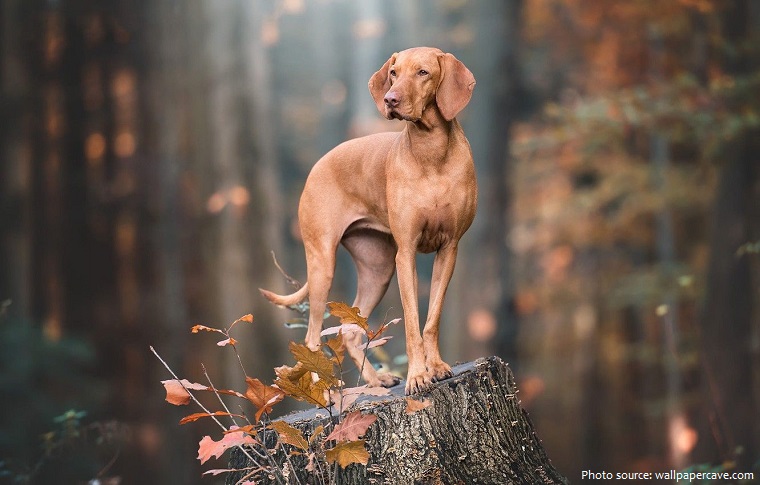
Vizslas are very energetic, gentle-mannered, loyal, caring, and very affectionate. They quickly form close bonds with their owners, children, and even strangers. Often, they are referred to as “velcro” dogs because
of their loyalty and affection. Vizslas will cry or whine when they feel neglected or are otherwise unhappy. Some will bark at strangers if they feel that they are invading the “pack” space. They are very good guard dogs when trained to be so.
The average lifespan of the Vizsla is 12 to 15 years.
It stands 53 to 61 cm (21 to 24 inches) and weighs 18 to 27 kg (40 to 60 pounds).
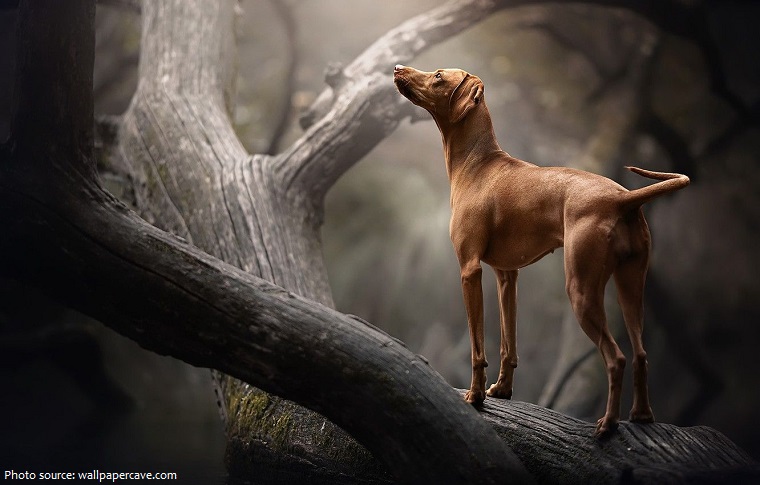
The standard coat is French-row yellow in several shadings. The coat could also be described as a yellow, copper-brown color, russet gold, and dark sandy gold. Solid, dark, mahogany red and pale yellow are considered faults and a disqualification in competitions. Small areas of white on the fore-chest, neck, or tail are permissible but not preferred. Some variations in the Vizsla coat color along their back (saddle-type marks) are typical.
The nose of the Vizsla will always have a reddish color that blends with the coat color. Black, brown, light pink, or another color nose is an indication of another breed. A Vizsla’s eye and nail color should also blend with the coat color.
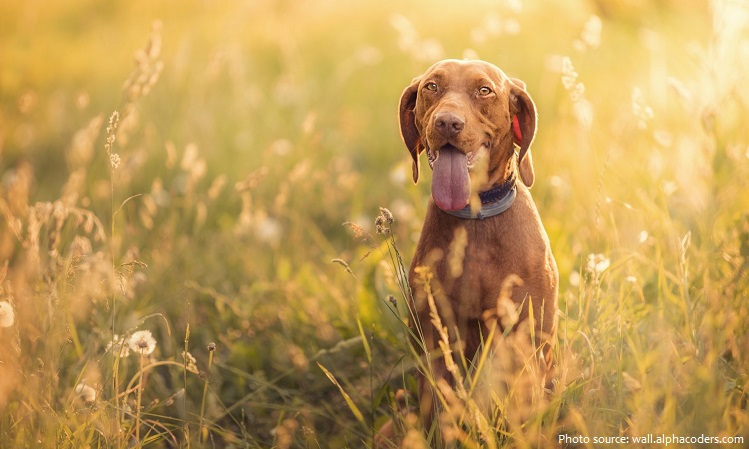
The Vizsla has an ancient and noble heritage. It is believed that their origins can be traced as far back as the 8th century. It was during this time that the Magyar clans in Hungary were established and they needed dogs with stamina, speed, athleticism and courage to aid them with their hunting. This is why they are often referred to as the Magyar or Hungarian Vizsla.
There is even a piece of artwork dating back to the 10th century that features a Magyar tribesman, his falcon and a dog that closely resembles the look of a Vizsla.
The first written reference to the Vizsla dog breed has been recorded in the Illustrated Vienna Chronicle prepared on order of King Louis I of Hungary by the Carmelite Friars in 1357.

As the centuries moved on, these dogs became prized possessions of Hungarian noblemen. They continued to refine the breeds hunting skills and temperament so that it more closely resembles the modern-day Vizsla that has won the hearts of many.
The Vizsla has survived the Turkish occupation (1526–1696), the Hungarian Revolution of 1848, World War I, World War II and the Hungarian People’s Republic. However, Vizslas faced and survived several near-extinctions in their history, including being overrun by English Pointers and German Shorthaired Pointers in the 1800s and again to near-extinction after World War II. A careful search of Hungary and a poll of Hungarian sportsmen revealed only about a dozen Vizslas of the true type still alive in the country. From that minimum stock, the breed rose to prominence once again. The various “strains” of the Vizsla have become somewhat distinctive as individuals bred stock that suited their hunting style.
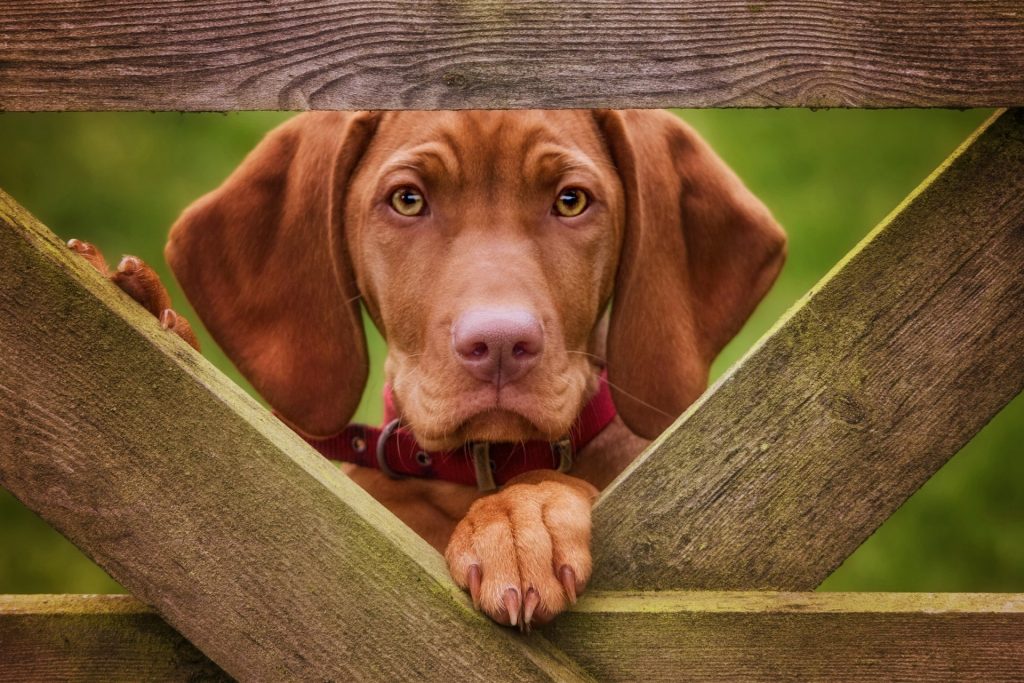
Outside Hungary, vizslas were commonly bred in Romania, Austria, Slovakia, and Serbia.
The Vizsla started arriving in the United States at the close of World War II. As interest in and devotion to the breed began to increase, owners formed the Vizsla Club of America in order to gain AKC recognition. As a result of registering foundation stock with the AKC, Vizsla owners were able to obtain official recognition on 25 November 1960, as the Vizsla became the 115th breed recognized by the American Kennel Club.
Various breeds are often mistaken for Vizslas and vice versa. Redbone Coonhounds, Weimaraners and Rhodesian Ridgebacks are most commonly mixed up. The body structure of a Vizsla is very similar in appearance to a Weimaraner and a Redbone Coonhound, though the Vizsla is typically leaner with a more defined musculature. However, Weimaraners and Rhodesian Ridgebacks are larger than Vizslas.
The average cost of a Vizsla puppy from a breeder is about $1,000. Most puppies are in the $500 to $1,700 range. But you can find puppies for much more expensive as well.
